How I Became an e-Resident of Estonia
Key Takeaways
- Estonia’s e-Residency program offers a government-issued digital identity and the opportunity to run a trusted company online, making it an appealing option for global entrepreneurs. However, it does not offer EU citizenship or any additional rights to entry.
- The process of becoming an e-Resident of Estonia involves filling out an application form, waiting for confirmation and payment, collecting a card and starter pack from a designated collection point, and verifying your card. Despite being an online program, some steps might still require a physical presence, like opening a bank account.
- While the e-Residency program is a promising concept, it’s still in its early stages and has some kinks to work out. The program is working on making processes like establishing a business and opening a bank account more seamless, but currently, these steps can be complex and time-consuming.

I’ve lived in three countries in my life, and I travel on a regular basis. I wouldn’t go as far as to say that we should have global open borders, but there are ways that the life of the new breed of global entrepreneurs could be easier.
One of those is registering a business. Registering a business outside of your country of residence has historically been reserved for those who have big businesses or those up to no good (or both). I would guess that many of you reading this live in one country, have perhaps lived in (or have strong connections to) another, and work for clients in others—paid in a variety of currencies.
A Game Changer from Estonia
Enter Estonia’s e-Residency program, an intriguing idea with big aims.
e-Residency offers to every world citizen a government-issued digital identity and the opportunity to run a trusted company online, unleashing the world’s entrepreneurial potential.
I think it’s a fantastic concept, and I love that many smaller countries around the world have decided to try these sorts of ideas. They have nothing to lose, so are trying ideas that larger or older countries either wouldn’t or couldn’t ever try.
One of the main advantages of Estonia’s program is that Estonia is an EU member, which opens your business to the EU trading zone and gives you access to bank accounts and financial tools (e.g. PayPal) in Euros—a globally recognized currency.
I’m a British citizen, but lived in Australia for seven years (where my business is currently registered), and I’ve been living in Germany for the past year. Much of my contract and freelance work is undertaken with clients outside of Germany, and I remain uncertain what my best approach is.
To me, and many like me, Estonia’s e-Residency program seems a dream come true, and I was keen to give it a try. I was aware of the program already, and then met some of its representatives at an event in Finland who encouraged me to sign up on the spot. I wanted to research more first (and write this article), but the fact it was even possible was amazing.
This Is Not Citizenship
As an e-Resident of Estonia, your rights are purely for business. So for anyone looking for a loophole to EU citizenship, this isn’t it. You get no extra rights to entry that you’re not entitled to already.
What Are the steps?
Let’s look at the steps involved in actually applying to be an e-citizen of Estonia.
Fill in the Application Form
The one page application form can be found here. It asks some simple questions about your current residency/address, and asks you to upload images of your passport that will be used to verify your identity when you collect your card. You’ll be asked why you want to apply for the citizenship. Finally you’ll be asked where you want to collect your card from when it’s ready. There are many locations available around the world, and the fee you pay may depend on your location.
Confirmation and Payment
Next, you’ll need to confirm details and pay. Annoyingly (as is common with visa applications generally) you still have to pay for the application, even if it’s not successful. The other negative is that the process will then take at least a month. (I guess there are still bureaucrats who need to check things over, even if the beginning of the process is progressive.)
After roughly a month, I received my conformation in the form of an email. I was informed when I could collect my card and starter pack from my chosen collection point, the Estonian embassy in Berlin. I had to show some ID, and gathered my ID card, card reader and some minimal documentation.
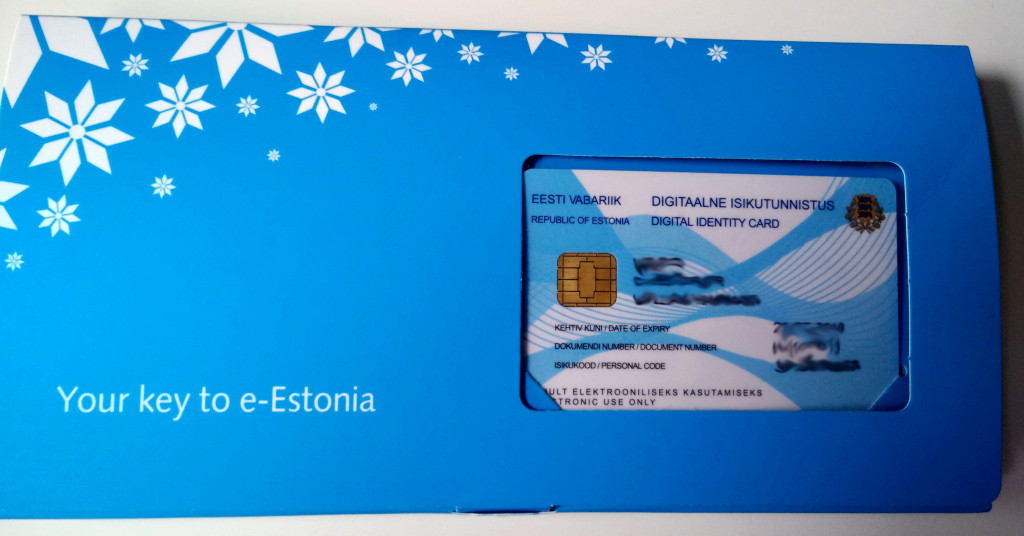
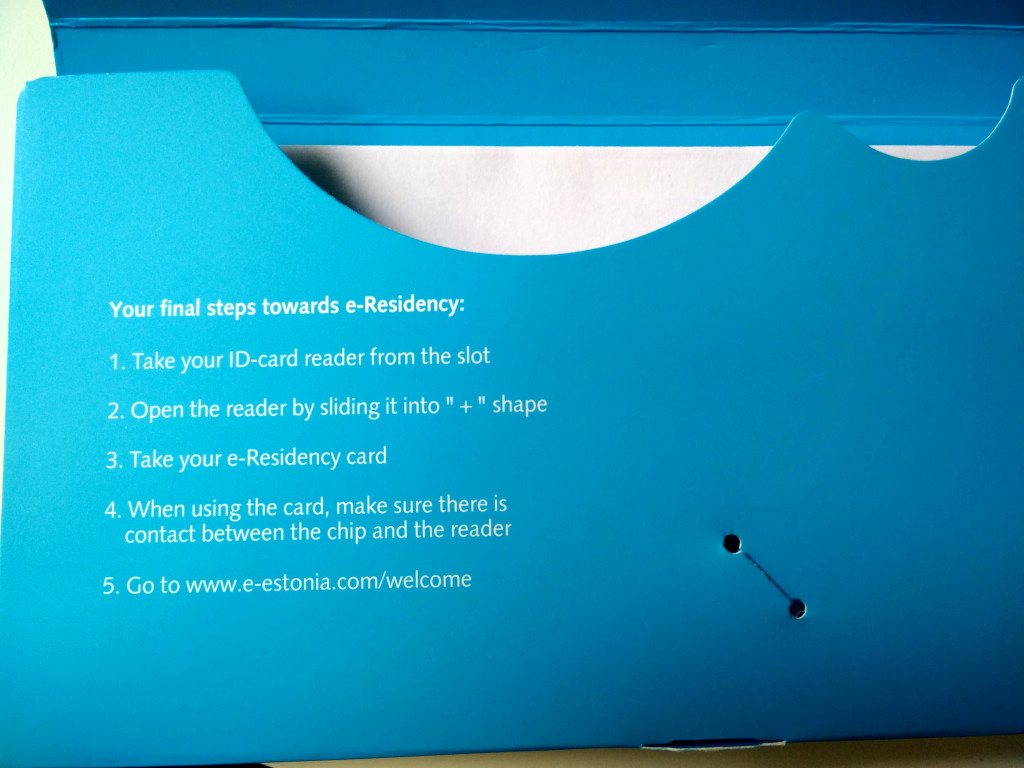
Card Verification
The Welcome pack includes a USB card reader used in combination with the ID Card’s chip for identity verification when you wish undertake an action such as opening a bank account or changing your details.
Next visit e-estonia.com/e-residents/welcome to download and install the reader software for your operating system:
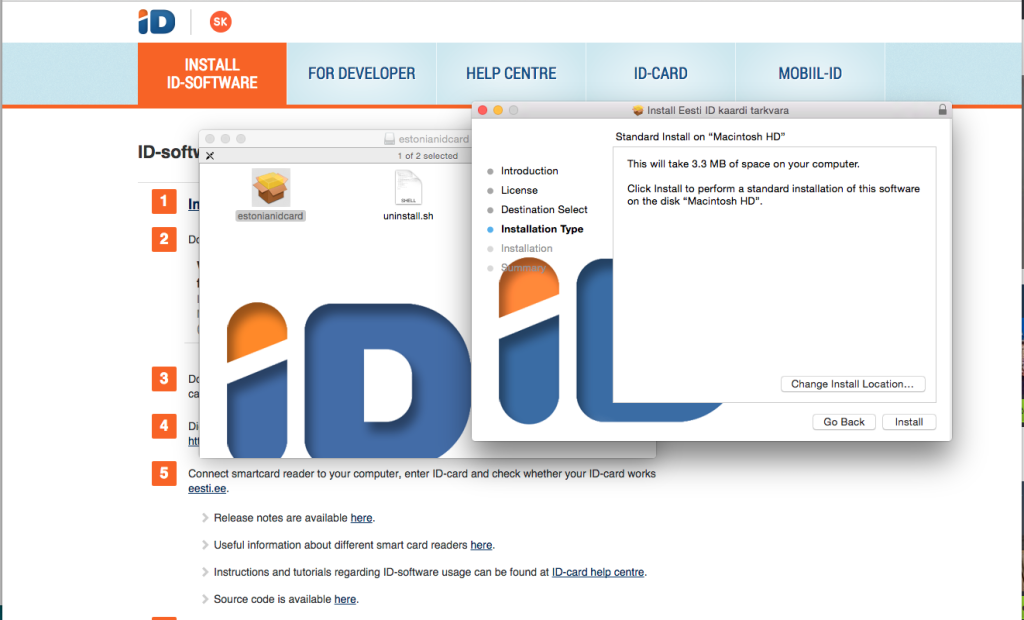
Open the reader to 90˚, slide the card face up into the thin slot at the bottom and plug it into a spare USB slot:
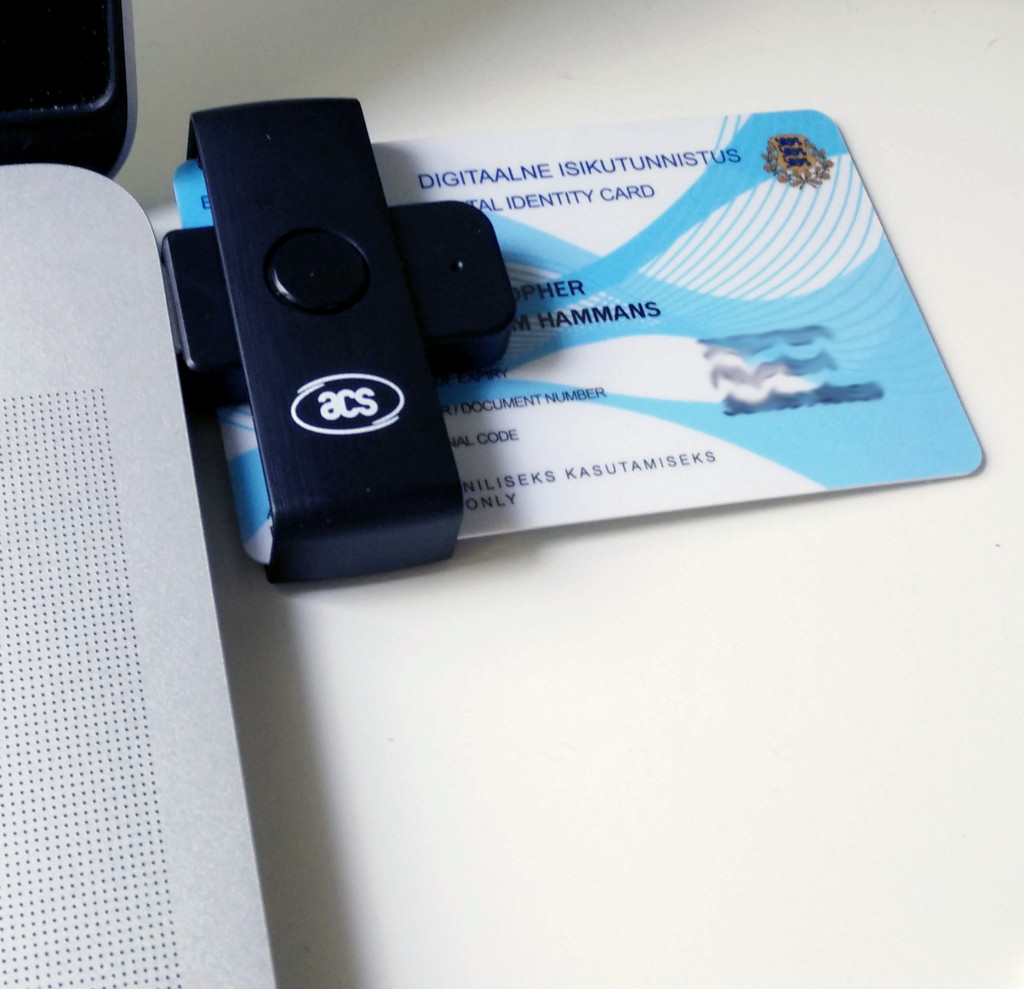
Launch the downloaded card reader. On my Mac, this is the DigiDoc3 Client application. The screen should display something like this:
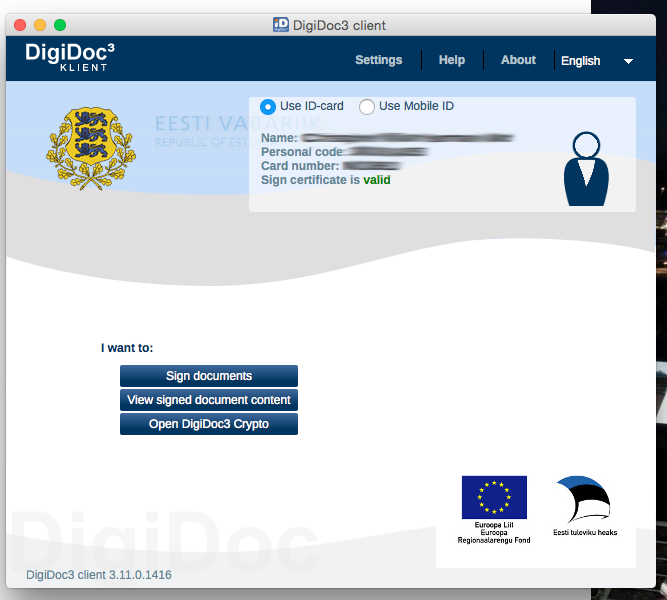
Once you have confirmed that your card is recognized, the final step is to click the blue Entrance button in right hand corner of the welcome web page, and then enter the supplied pin code to confirm the card.
You may be asked to create or select a digital signature certificate during the process. I experienced some issues with this, and generally found that Safari and Firefox were the most stable browsers. I was informed by the e-Residency support department that this is a known issue and not essential to taking part in the program—which doesn’t put me at ease, but there you go!
What’s Next
Great, you’re now an Estonian business citizen, but what does this mean we can actually do?
Establish a Business
In theory, this is a simple process. You can register a business online at the Estonian Company registration Portal using your E-Resident card as access.
Unsurprisingly, it isn’t quite that simple. You’ll need an Estonian address to do this, and there are links to companies that will register a virtual address for you—though I couldn’t find details when I followed them. The e-Residency team says it’s working to make this process easier and more seamless.
Open a Bank Account
The program is an ideal solution if you need a Euro-based bank account in the European Union. Getting a bank account may or may not be a simple process, and is rather up to the partner bank you contact through the e-Residency portal. It will also need one face-to-face meeting for compliance reasons. Again, the team are working to make this process simpler and more seamless.
Digital Signatures
Digital signatures are a popular method for securely signing a document and verifying the signee’s identity. Digital signatures issued under the Estonian e-Residency program are recognized under EU and US laws. This is the simplest task to undertake with your Estonia e-Residency and requires no extra steps.
Conclusion
My feeling is that the e-Residency program is at something of a “beta” stage. It’s a fantastic idea, but not yet fully formed. I love what Estonia is trying to accomplish. It even has a developer program with hack events planned. How amazing is that!
However, many of the practical steps for using the residency are still too difficult and “old world”. I appreciate that this is mainly due to factors beyond the program’s control, such as third parties. And (as noted above) it’s acknowledged that work is needed to rectify this.
I recommend you sign up to their newsletter and apply for the program if you wish. It may not be much use to you right now, but hopefully the near future will offer the ideal digital nomad citizenship thanks to a small progressive country nestled on the Baltic coast.
Frequently Asked Questions (FAQs) about Estonia’s E-Residency
What are the benefits of Estonia’s E-Residency?
Estonia’s E-Residency program offers a wide range of benefits. It allows global entrepreneurs to start and manage an EU-based company online. This means you can operate your business without the need to physically be in Estonia or even Europe. It also provides access to Estonia’s advanced digital infrastructure and services, including banking, payment processing, and taxation. Moreover, it offers the legitimacy and security of operating under EU laws and regulations.
How can I apply for Estonia’s E-Residency?
Applying for Estonia’s E-Residency is a straightforward online process. You need to fill out an application form on the official E-Residency website, submit the required documents, and pay the state fee. The application is then reviewed by the Estonian Police and Border Guard Board. If approved, you can pick up your digital ID card from an Estonian Embassy or Consulate.
What are the costs associated with Estonia’s E-Residency?
The cost of applying for Estonia’s E-Residency is €100. This fee covers the processing of your application and the issuance of your digital ID card. However, there may be additional costs associated with setting up and running your business, such as company registration fees, annual reports fees, and banking fees.
Can I use Estonia’s E-Residency to live or work in Estonia or the EU?
No, Estonia’s E-Residency does not grant you the right to live or work in Estonia or the EU. It is a digital residency that allows you to manage your business online. It does not confer citizenship, tax residency, physical residency, or the right to travel to Estonia or the EU.
What services can I access with Estonia’s E-Residency?
With Estonia’s E-Residency, you can access a wide range of digital services. These include company registration, banking, payment processing, tax declaration, and digital signing of documents. You can also use it to access Estonia’s e-government services.
How secure is Estonia’s E-Residency?
Estonia’s E-Residency is highly secure. The digital ID card uses 2048-bit public key encryption and requires a PIN code for access. All transactions are logged and traceable, providing a high level of transparency and accountability.
Can I open a bank account with Estonia’s E-Residency?
Yes, you can open a bank account with Estonia’s E-Residency. However, the process may require a physical visit to the bank in Estonia. Some banks may also offer remote account opening services.
What types of businesses can benefit from Estonia’s E-Residency?
Estonia’s E-Residency is particularly beneficial for digital nomads, freelancers, consultants, and international business owners who want to operate their business in the EU. It is also useful for businesses that want to access Estonia’s advanced digital infrastructure and services.
How long does it take to get Estonia’s E-Residency?
The processing time for Estonia’s E-Residency application is typically 6-8 weeks. However, it may take longer depending on the volume of applications and the speed of the review process.
Can I renew my Estonia’s E-Residency?
Yes, you can renew your Estonia’s E-Residency. The digital ID card is valid for 5 years and can be renewed online. The renewal process is similar to the initial application process.
Developer Relations, Technical Writing and Editing, (Board) Game Design, Education, Explanation and always more to come. English/Australian living in Berlin, Herzlich Willkommen!

